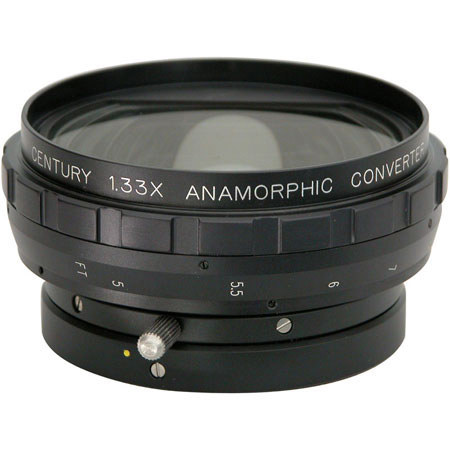
Comments about Century Optics Century Optics 1.33x Anamorphic Converter for the Canon GL-1 and GL-2 Video Cameras, Bayonet Mount:
this lens is a disaster,the worst color fringing i have seen.better buying a [...]projection anamorphic for 30 dollars.this is rare because it was bad.the price reflects a company trying to recoup costs rather than quality.the sharpness and resolution is very bad.if i was offered 2 for 100 bucks i would say no.
[2 of 2 customers found this review helpful]
Comments about Century Optics Century Optics 1.33x Anamorphic Converter for the Canon GL-1 and GL-2 Video Cameras, Bayonet Mount:
I bought this lens as an upgrade from the Century Optics 16:9 adapter lens. My main reason was to enable me to use the full reach of the zoom lens on my Canon XM2. The most noticeable problem with this lens is the significant red/blue chromatic aberrations on the right side of the frame. In side-by-side comparisons with the built in lens on my Canon XM2 I noticed that while I gain "resolution" with the anamorphic lens, I lose sharpness. This is a known issue with all anamorphic lenses though.
One of the more difficult things about this lens is that any time a significant change in focus is made, you must first (or simultaneously using 2 hands) set the focal distance on the anamorphic lens, then focus normally on the built-in lens. This can be a major inconvenience, especially in run-and-gun situations. However, the option to focus the anamorphic lens is nice and allows full use of the built-in zoom lens. Also, at full telephoto, while you can focus (at f2.8-f8), the image becomes quite soft and diffused, as with any add-on lens. The built-in lens at full telephoto performs much better.
One minor concern was that this lens seems to either use a different placement of the anamorphic element or a different lens coating from the 16:9 adapter, eliminating most of the signature horizontal blue streaks coming off highlights, characteristic of anamorphic optics. Technically this is actually an improvement, but I really miss that look.
I would definitely not recommend this lens to documentary film-makers. Using it for narrative can definitely increase production value and give your films an interesting look but there will be more set-up time. I use this lens in conjunction with the in-camera 16:9 cropping guide to allow me to compose a 2.35:1 final image without significant image loss. Practically speaking, this is not worth the high price tag, but if you want the anamorphic look, I'd say use the cheaper 16:9 adapter and just use the built-in lens for telephoto work.
At this point in the video game, the obvious better option is to go with an HD camera rather than deal with the hassles of shooting anamorphic.

